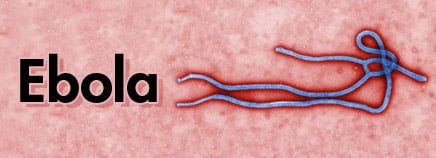Marburg virus and Ebola virus are related viruses which are causing hemorrhagic fevers. This is an illness which is marked by hemorrhage (this means that you have severe bleeding), organ failure and in many cases this disease is a reason for death. These viruses are native to Africa where sporadic outbreaks are occurring for decades. These viruses live in animal hosts. Humans can get these viruses from the infected animal. After some individual has been contaminated with this disease, then it can be spread from person to person through contaminated needles or contact with body fluids. There are not proven results that some drug can treat these viruses. People who are diagnosed with Marburg virus or Ebola virus can receive supportive care and treatment for complications. Scientists are trying to discover vaccines about these deadly diseases and they are coming closer to it. [1,2]
Symptoms of Ebola virus
The signs and symptoms of Ebola and Marburg virus typically begin abruptly within 5 to 10 days. Here are the early signs and symptoms of this disease [3]:
- Weakness
- Chills
- Joint and muscle aches
- Severe headaches
- Fever
But as the time passes, these symptoms can increase to severe symptoms and they may include:
- Internal bleeding
- Bleeding which is usually from your eyes and bruising (people who suffer from Ebola virus and are near death can have bleeding from other parts of their bodies such as rectum, nose and ears)
- Severe weight loss
- Stomach pain
- Chest pain and cough
- Raised rash
- Red eyes
- Diarrhea (in some cases it can be bloody diarrhea)
- Nausea and vomiting
 Ebola virus causes & transmission
Ebola virus causes & transmission
Causes: There were studies in which was shown that the Ebola virus has been found in chimps, African monkeys and other nonhuman primates. In the pigs and monkeys in the Philippines was discovered a milder strain of Ebola. The fruit bats, chimps and monkeys in Africa are carriers of the Marburg virus. [1]
Transmission from animals to humans: There are some studies in which is said that these viruses are transmitted to humans through an infected animal’s bodily fluid. Here are the examples for this kind of transmission:
- Waste products: There was one case in which some underground mine workers and tourists in certain African caves where infected with this virus when they have been in a contact with urine or feces of infected baths. [4]
- Blood: If you eat infected animals or you are butchering them, then this can spread these viruses. Scientists who have operated the infected animals as part of their research also have contracted with this virus
Transmission from person to person: People who are infected with this condition usually do not become contagious until they develop the symptoms of this disease. When family members are taking care for the sick relatives or they prepare for the dead for burial, then they often become infected with this virus. If the medical personnel do not use protective gear as gloves and surgical masks, then they can also become infected with this virus. We know that Africa is a very poor continent so this is a reason why those people must reuse syringes and needles. There are many cases when the worst Ebola epidemics have been occurred when the injection equipment was not sterilized between both uses. There are not proves that the Marburg or Ebola virus can be spread with insect bites. [5]
Risk factors: Most people are having low chances of getting Marburg or Ebola virus. This risk can increase if you:
- Prepare people for burial: The bodies of people who have died of Marburg or Ebola are virus are still contagious and if you help their bodies for burial, then this can increase your risk of getting these diseases. [6]
- Provide medicinal or personal care: When some family member or friend is caring about their sick relatives, then they have increased chances of getting Ebola. Also medical personnel can be infected with these viruses if they do not use protective gear such as gloves and surgical masks. [7]
- Travel to Africa: If you travel to Africa where Marburg and Ebola outbreaks have occurred, then this can increase your chances of getting ebola virus. [1,2,3]
References:
[1] Centers for Disease Control and Prevention. History of ebola virus disease. Retrieved from www.cdc.gov/vhf/ebola/history/summaries
[2] Li J, Duan HJ, Chen HY, et al. Age and Ebola viral load correlate with mortality and survival time in 288 Ebola virus disease patients. International Journal of Infectious Diseases. 2016;42:34-9.
[3] Beeching NJ, Fenech M, Houlihan CF. Ebola virus disease. BMJ. 2014;349:g7348.
[4] Swanepoel R, Smit SB, Rollin PE, et al. Studies of reservoir hosts for Marburg virus. Emerging Infectious Disease. 2007;13(12):1847–51.
[5] Chiappelli F, Bakhordarian A, Thames AD, et al. Ebola: Translational science considerations. Journal of Translational Medicine. 2015;13.
[6] Manguvo A, Mafuvadze B. The impact of traditional and religious practices on the spread of Ebola in West Africa: time for a strategic shift. The Pan African Medical Journal. 2015;22(Suppl1):9.
[7] Hersi M, Stevens A, Quach P, et al. Effectiveness of personal protective equipment for healthcare workers caring for patients with filovirus disease: A rapid review. PLoS One. 2015;10(10):e0140290.



 Ebola virus causes & transmission
Ebola virus causes & transmission
